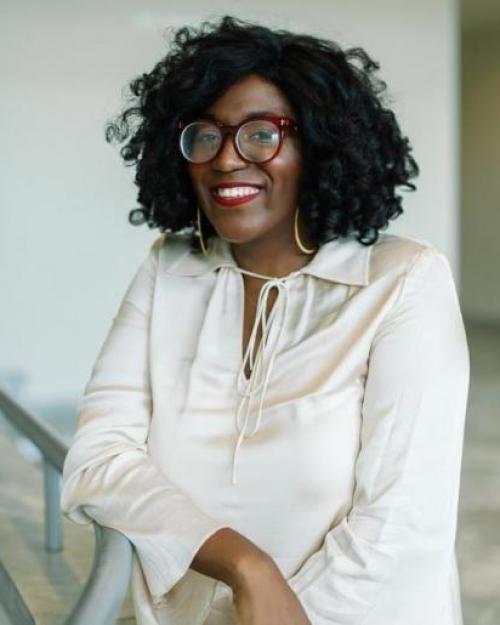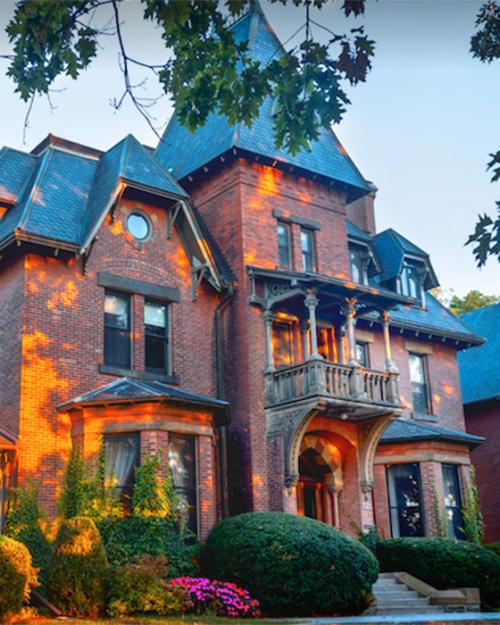Samantha N. Sheppard, associate professor in the Department of Performing and Media Arts (PMA) in the College of Arts & Sciences, will share photos of her teenage scrapbook and insights from her research as she analyzes television’s links between home and self in this year’s Annual Invitational Lecture from the Society for the Humanities.
The lecture is set for 5 p.m. Feb. 11 in the Guerlac Room of the A.D. White House and is free and open to the public.

"Sanctuary from the Storm: Making (My) Room with The Torkelsons," will explore Sheppard’s fondness for the 1990s television show and what the show’s representation of home spaces can tell us about the way television influences living practices.
She will also explore how the predominantly white television shows of the time presented challenges of representation (and continue to) for Black viewers, especially teenagers.
This research comes from a chapter she’s written for an upcoming issue of the journal Television & New Media, edited by Nick Salvato, professor in PMA (A&S).
“I was not primed to identify with the story of the Torkelsons,” Sheppard said. “It’s about a young white teenager living with her single mother, who’s raising five kids in rural Oklahoma. I was a teenage black girl from LA living in the suburbs of Georgia.
“But what drew me to the story, besides it being focused on a tween girl, was the way that the main character Dorothy treated her bedroom. For teen girls, their bedrooms are really important media-saturated and mediated spaces and I had that same relationship with my bedroom. I put all of the things I found pleasurable in there.”
Television viewers often have deep connections to TV homes, Sheppard said, mentioning “The Golden Girls” iconic kitchen, complete with cheesecakes, and Blanche’s bedroom.
“It’s an interesting thing to try to make peace at home with TV when you’re a Black viewer because you’re sifting through the channels and the stories to find a place where you feel a connection,” she said, “even though the world that’s represented absences your image and can sometimes be racially hostile.”
As a film and media scholar, Sheppard said her talk will include lots of visuals and offer an engaging look at critical arguments in television studies.
The Society for the Humanities’ Annual Invitational Lecture is designed to give a Cornell audience the chance to hear from a distinguished Cornell humanities faculty member who frequently speaks at other universities.
"Too often our colleagues are invited to give high-profile talks at other campuses; it's a treat to be able to host the annual Faculty Invitational and provide a spotlight on a scholar who is at Cornell,” Durba Ghosh, professor of history (A&S) and the Taylor Family Director of the Society for the Humanities. “Samantha's work is boldly interdisciplinary; I love that her work is on things (TV and sports) that we think we know. After I hear Samantha speak, I know that I will never 'see’ things the same way again."
Sheppard is chair of the Department of Performing and Media Arts and is also affiliated with the Africana Studies and Research Center, the American Studies Program and the Feminist, Gender and Sexuality Studies Program.
She is the author of Sporting Blackness: Race, Embodiment, and Critical Muscle Memory on Screen (University of California Press, 2020). She is co-editor of the anthologies From Madea to Media Mogul: Theorizing Tyler Perry (University Press of Mississippi, 2016) with TreaAndrea Russworm and Karen Bowdre and Sporting Realities: Critical Readings on the Sports Documentary (University of Nebraska Press, 2020) with Travis Vogan. She is currently at work on books about basketball films and media history.






